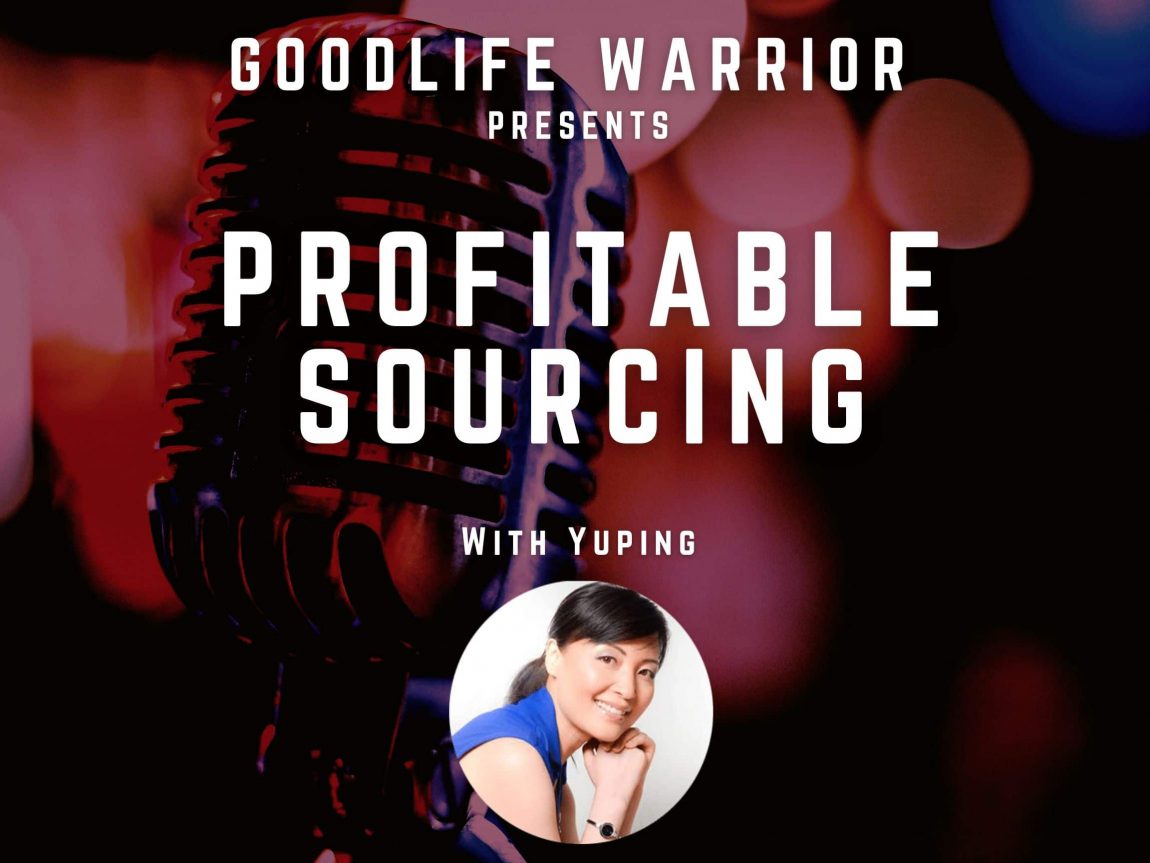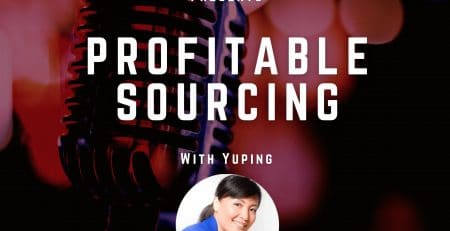In this episode, I will help you understand everything you want to know about shipping insurance. Enjoy!
[buzzsprout episode=’7521061′ player=’true’]
Where to subscribe: Apple Podcast | Google Podcasts | Spotify | Stitcher | RSS
Full Transcript:
Welcome to the GoodLife Warrior podcast. I’m Yuping. We make sourcing easy, fun, and profitable for your business. This episode was originally aired as a video on my YouTube channel, youtube.com/goodlifewarrior. As always, high-quality, professional sourcing content delivered to you with passion and my unique Chinese accent. Enjoy.
Do you need shipping insurance? Do I need shipping insurance? Honestly, I’ve been doing sourcing for 20 years, I never gave too much thought to getting shipping insurance until I lost a container that worth $83,000. In this video, I’m going to share with you the pros and cons of getting the shipping insurance, whether or not you should get one, how much does it cost, and what is the best place to get one if you need one. Let’s get started.
Welcome to the Goodlife Warrior channel. What an honor to share my sourcing knowledge with you. I hope you love and enjoy my content and support me by subscribing to my channel, maybe even consider leaving a comment. I would appreciate that.
What happened to the $83,000 container that I lost? Well, I didn’t personally lose it. The shipping line, One Apus, lost it. As you can see on the screen here, many containers are already in the water. The estimate is 1,900 containers. When I got the call from my freight forwarder telling me that my container is on that ship, that it’s possible my container is already in the water, I still had hope, until I see more pictures, many containers on the ship are already collapsed and damaged so badly. Even if I get the container eventually, the products inside of the container probably are very damaged. So we need to talk about the shipping insurance.
You never hear me talk about shipping insurance often because shipping insurance is one of those things that cost money, even though it’s not a lot, but it still goes to your bottom line. The damage doesn’t happen very often. This third reason is a strong reason for me, even if you have damage, somehow the insurance company always has a strong reason to deny the claim for inadequate packaging. This is their exclusion to deny all claims if you have inadequate packaging. I have been dinged so many times, couldn’t get my damaged product compensated by the insurance company.
Not every shipment needs insurance, so here is my recommendation if you have this type of shipment. One is air shipping. It doesn’t matter whether your product is fragile or not, whether it’s a gift box or glassware, or metal, you need to ensure your product when you put your product through air shipping. The risk of damage just goes up like this when you ship through air. The second one is LCL, less than container load, and LTL, less than truckload. That’s when your shipment is mingled with other people’s products. So many hands in handling LCL and LTL, the risk of damage go up like that too. So make sure you ensure your air shipment and LTL and LCL shipment.
For the full container load, the risk of damage is very low, because when you book a full container, the container was dropped at your supplier’s factory, the workers load up your product into the container and then the door is sealed until the container was delivered to the destination, either it’s Amazon or your warehouse, then someone opens the door and unload your product. As you can see here, this entire process has very minimum handling. That’s why the risk of damage is low. The shipping accident, like the One Apus accident we saw, it doesn’t happen very often. If you are buying a full container load, what should be your decision? The bottom line or the peace of mind? My advice is to get shipping insurance. We can get away with 10 times, 100 times, even thousands of times buying full container load without any problems until once. That one accident could be very expensive if you don’t have any shipping insurance.
Now let’s talk about shipping insurance costs. Now I’m going to show you how to calculate your shipping insurance premier, not just for the sake of getting to the cost part, but also get to understand when you file a claim, what you will be compensated too. Let’s walk this through very quickly. The first step is to determine the commercial invoice value. I’m using my shipment as an example here and then we’ll just do a new one. It’s going to be quick. The first step, determine commercial invoice value, mine is about 83,000. Add the shipping cost, mine is a 40-foot container. Let’s just say this container costs 4,500. It’s going to be between 45 to $5,000. Then we add other expenses. I’m going to explain this in just a little bit. Now we have a subtotal, $99,000.
Now we add insurance premier. This is kind of odd. They add the insurance premier back to the total value. If you are getting insurance from your freight forwarder, you’re going to get probably between 0.35 to 0.65 as your rate. I’m putting down at 0.50 here. This is part of the insurance cost. We use 99,000 here, 99,000 times 0.50. That’s how we get the 499 here. Then we add these two together, 99,000 plus the $500 here. We got 100,000. Now we’re going to add one more thing, that is the insurance company’s markup. It’s about 10%. You add 100,000 times 10% here. Now you get $110,000. You see 100,000 plus the 10,000 markups. This is your total insured value. From here, you use the same rate that your freight forwarder quote to you. That’s how you get to $552. This is the total insured value times your premier. That’s your cost.
Let’s walk through an example. Let’s say your shipment is 5,000. Before we do that, let me explain. This plays a huge part in this cost. The 15% I’m adding here is a duty. Believe it or not, if you lost your shipment after it’s cleared or damaged, the entire container is damaged, you can fell the claim with the duty because you paid to the custom. In my case, this is $83,000 worth of the goods times 15%. See, this plays a huge part because if I don’t have the duty, let’s say if the tariff is removed, this 552 will be a little cheaper. That’s why I want to explain here.
Let’s use your shipment as an example, and we’re going to walk through this quickly. Let’s say your shipment is $5,000. Your shipping cost is LCL and cost you $1,500. Your duty would be 5,000 times your 15%, whatever the percentage is, right? Now you add these together, all three fields. Now you have $7,200 before we add onto these insurance premier and markup. Now, the insurance premier, let’s just say it’s 0.5, the same thing. That will be $36. It’s nothing. Then you add these two fields together to get this value.
Now you add insurance markup times 10%. Now it’s 700 belongs to the insurance company. Now you add your total value as these two together. Yes, so now your insured value is 8,000. Now you apply your 8,000 times your insurance premiere. Yes, so your $5,000 worth of the goods, it’s only costing you $40. It’s not that expensive. But for a full container load, it does add up. If you’re moving 10 containers a week or a month and then that become thousands of dollars. This is the calculation. I hope you get it. If you didn’t get it, then keep watching this part until you get it.
Now you know how to calculate the cost of shipping insurance, let’s talk about where do you get your shipping insurance. The best place is your freight forwarder. They buy bulk insurance from the insurance broker. You can get it from them. You can get the shipping insurance for yourself from the broker too. If you have a brick and mortar business, you need to ensure you’re building your equipment, then you can buy your cargo insurance from the same broker.
Now, let me talk about one exclusion that you don’t need shipping insurance. That’s when you buy the product under the DDP shipping term. When your supplier quotes you DDP, deliver duty paid to your place, which means they own this product to the time when it’s delivered. If there’s damage or loss, it’s on them to replace it for you. If you’re buying under ex-work or FOB, the ownership transfer either at the supplier dock or on the ship when it’s loaded to the ship, then you’ll own the product. When it’s damaged or lost, it is on you, that’s when you need to buy shipping insurance.
In summary, we always and always want to get the shipping insurance for our air shipment and LCL shipment. If you have the money to buy a full container load shipment, do consider check the box of insurance. Pretty much, the conclusion is to buy the shipping insurance for every single shipment, except for the DDP shipping. I hope you loved this video. I hope you get to know shipping insurance a lot more now.
Check out the link, the Sourcing Warrior Mastermind link, undertake Sourcing Warrior’s quiz to find out your sourcing IQ. Make it fun, learn something, have a great day. I’ll see you in the next episode.





